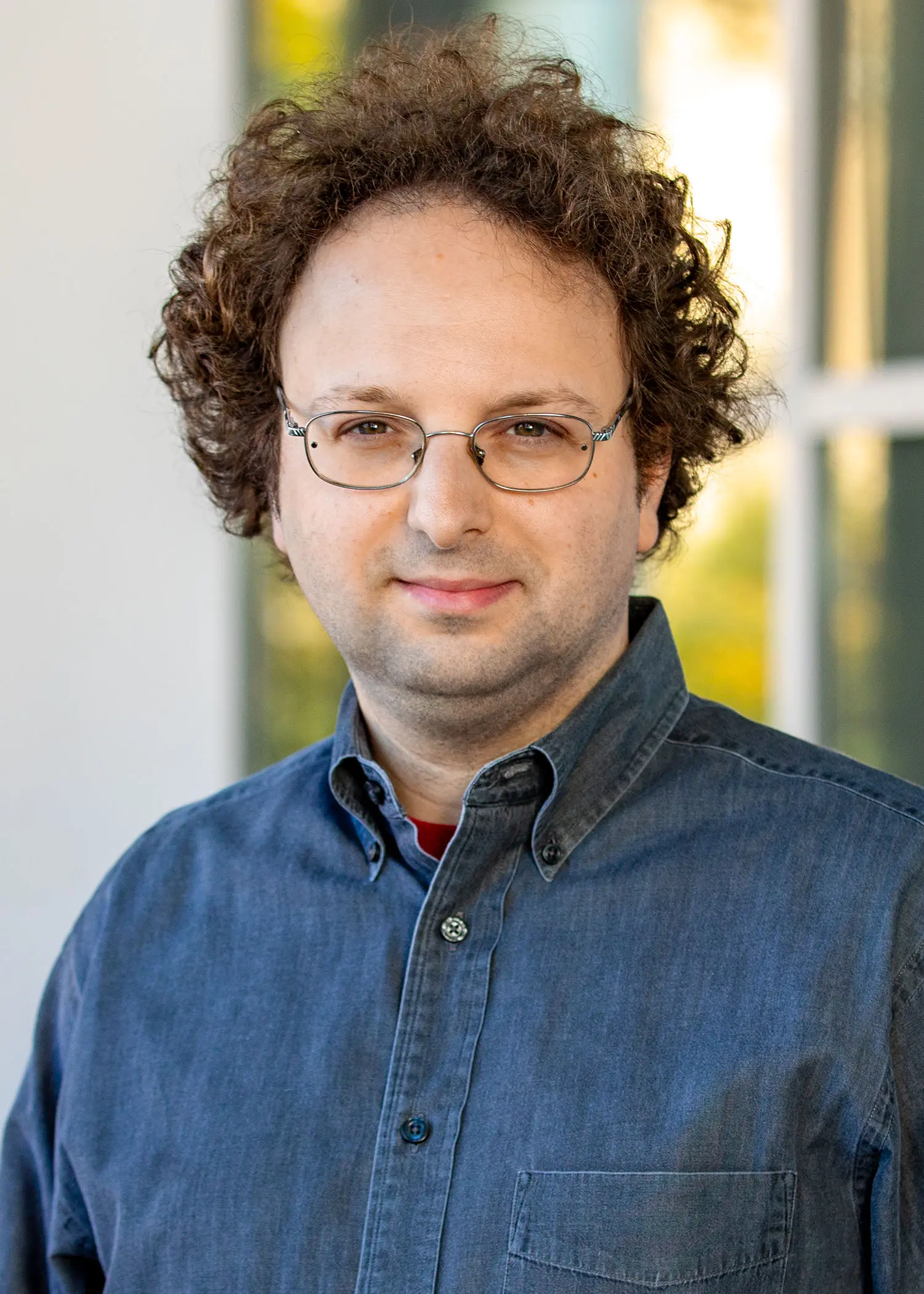A team of University of Wisconsin-Madison engineers has used the material vanadium dioxide to craft an optical device that is simultaneously an electrically tunable optical switch, optical limiter, and one-way window for light.
 Mikhail Kats
Mikhail Kats
The research was led by Mikhail Kats, an associate professor in electrical and computer engineering at UW-Madison, Chenghao Wan (PhD MS&E ’22), now a postdoctoral scholar at Stanford University, and Jonathan King, a PhD student in electrical and computer engineering. A paper describing the device was just published in the journal Nature Photonics.
“We used a metasurface to engineer the interaction between light and this phase-transition material, vanadium oxide, making a device with a number of useful functionalities,” says Kats. “And we’ve integrated electrical control all in one structure.”
The phase transition of vanadium dioxide, giving it the ability to switch from a semiconductor to a metal and vice versa, was discovered more than half a century ago. However, finding ways to incorporate the material into functional devices has been difficult. At room temperature, vanadium dioxide is transparent to infrared light; when heated, however, it becomes opaque.
 Jonathan King and Chenghao Wan
Jonathan King and Chenghao Wan
Simply zapping the material with electricity to heat it up isn’t precise enough—so Kats and his team created a thin nanodevice, or metasurface, which both provides optical control and simultaneously acts as a nano-heater, allowing them to fine-tune vanadium dioxide’s temperature-dependent properties using an electrical current.
After extensive testing and modeling of the material to understand its properties and transitions, they made their metasurface from extremely thin gold. It’s etched with photonic structures that Wan created using lithography in a cleanroom in the college’s Nanoscale Fabrication Center.
The team built the metasurface on top of a high-quality thin film of vanadium dioxide synthesized by longtime collaborator Shriram Ramanathan and his students at Rutgers University. King completed the device by packaging it in a small circuit board for direct electrical control.
“It was a bit of an effort,” says Wan. “It took time and patience to come up with a reliable fabrication ‘recipe’ before we felt confident we could create the device as desired.”
When it’s all put together, the device is multifunctional. When the team precisely heats the material using the metasurface, they can use it as an optical switch, which allows them to block some or all of the infrared light passing through the material. It can be an optical limiter, which prevents infrared light passing through it from becoming too bright; that’s useful in protecting sensitive cameras and other equipment. It can also be used as a nonlinear optical isolator, which allows light to pass through the material in one direction but not the other.
The team can tune the device to work with the long-wave infrared spectrum and the short wave as well. Adding strain or stress to the vanadium dioxide can provide even more functionality, something the team hopes to investigate in the near future.
The researchers emphasize that this paper is the culmination of a series of interconnected studies and papers stretching across nearly 10 years and made possible through sustained teamwork and collaboration. “Being in a group is all about building expertise and our set of capabilities and ultimately fusing them all together,” says Kats. “Like in this case: Over almost a decade, our simulations and applications experience and materials collaboration resulted in significant engineering progress.”
Kats is the Jack St. Clair Kilby and Antoine-Bascom Associate Professor.
Other UW-Madison authors include Sanket Deshpande. Other authors include Tae Joon Park, who worked on the project at Purdue University, presently at the University of California, Berkeley, and Zhen Zhan, who worked on the project at Purdue University, currently at Xi’an Jiaotong University.
Featured Image: By adding a thin metasurface to vanadium dioxide, the team is able to create an electrically tunable optical device.